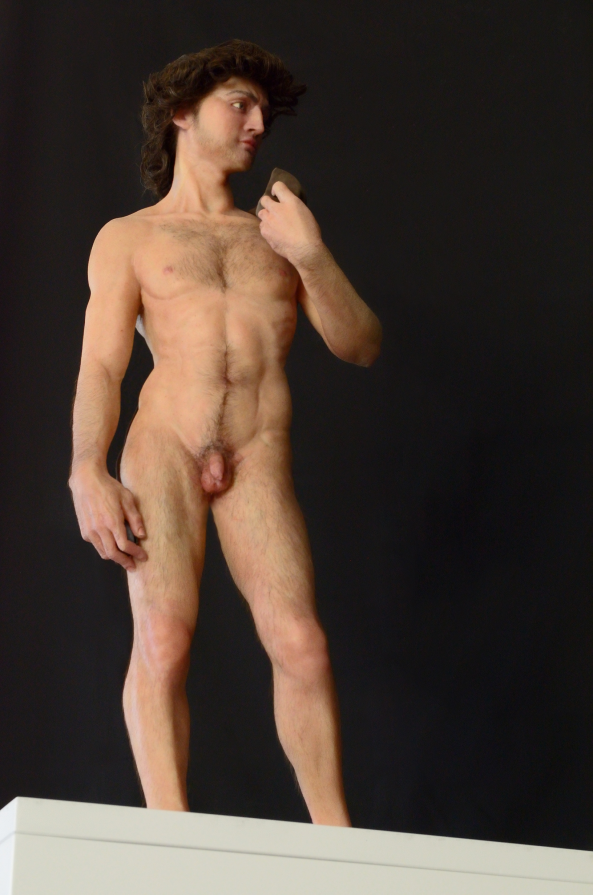
David Hypersonage
Indeed a more detailed discussion can be developed on HYPERSONAGE.
Since the early symptons of the so-called "death of Art" and signs of what would eventually become the historical avant-gardes, artists have begun to reflect and dispute over Art through reinterpretations, and deliberate misinterpretations, of its most celebrated instances; for example, the Mona Lisa fumant le pipe, by Eugène Bataille, which was presented in 1883, blatantly foreshadowing the two L.H.O.O.Q. by Marcel Duchamp, the first one dated 1919.
It is not a question of a rhetoric of demystification or parody, as it has deep roots in the same crisis of modern Art which, through the anti-art of the nineteenth century avant-gardes, and the aesthetisation of the image carried to the last (till the anaesthetisation for the images), eventually led to the process of dematerialization of the art object (the same Bataille can be considered a conceptual artist avant la lettre, a precursor but not the only one at that time).
Instead, the parallel process of de-realization, characteristic of contemporary Art, collapses into a play of hyper-realization in HYPERSONAGE .
This effect is obtained through the alienation of its classical texts, masterpieces today deprived of any form of aura, reduced to the function of icons of mass culture/market: alienated, in fact, in the hyper-reality that is described by Jean Baudrillard as a hallucinated and mystifying fiction.
It almost appears as a senile disease of Art which, in the contemporary age, does not find any space for a regeneration.
Therefore the HYPERSONAGEs seem to step back, bringing the unreality of the artistic representation back to reality, through an escamotage, i.e. the illusion of realism – or, in fact, the hyper-realist rhetoric.
The hyperrealism is drawn away from the body of reality and takes body in the Art itself, mimicking a parousia, aware that it is just a fata morgana.
In fact, it is always a matter of illusion, and this statute shines through the play of scale, because illusion flaunts herself and is shown up.
The HYPERSONAGEs seem therefore to come out of Art history by clichés, emancipating from their contexts, which are the artworks (the texts), and, like Alice through the mirror, they find themselves in Wonderland: they look at the world and are looked at, while nobody is really able to understand which is more illusory, because one reflects the illusory nature of the other one, in a mise en abîme that apparently leaves no escape.
Can one still hope to denounce the illusory misalliance of the pleasure principle with the reality principle? Can one hope to do so thanks to the rethorical instrumentarium of contemporary Art?
The HYPERSONAGEs attempt to achieve this coincidence of contradictions, they are the embodiment of a living aporia in Art, they are a prosopopoeia.












Comments 0
Say something